
The Peenemünde Army Research Center was founded in 1937 as one of five military proving grounds under the German Army Weapons Office (Heereswaffenamt). Several German guided missiles and rockets of World War II were developed by the HVP, including the V-2 rocket. The works were attacked by the British in Operation Crossbow from August 1943, before falling to the Soviets in May 1945.

27th Volhynian Infantry Division was a World War II Polish Armia Krajowa unit fighting in the Volhynia region in 1944. It was created on January 15, 1944, from smaller partisan self-defence units during the Volhynia massacre and was patterned after the prewar Polish 27th Infantry Division.
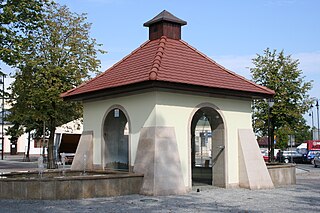
Kolbuszowa is a small town in south-eastern Poland, with 9,190 inhabitants (02.06.2009). Situated in the Sandomierz Forest in the Subcarpathian Voivodship, it is the capital of Kolbuszowa County. Kolbuszowa belongs to historic Lesser Poland, near its border with another historic region, Red Ruthenia.
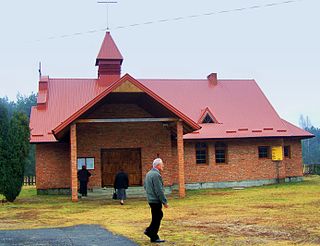
Blizna is a village in the administrative district of Gmina Ostrów, within Ropczyce-Sędziszów County, Subcarpathian Voivodeship, in south-eastern Poland. It lies approximately 12 kilometres (7 mi) north of Ostrów, 12 km (7 mi) north of Ropczyce, and 34 km (21 mi) north-west of the regional capital Rzeszów. It has a population of about 250.

The Aggregat series was a set of ballistic missile designs developed in 1933–1945 by a research program of Nazi Germany's Armed Forces (Wehrmacht). Its greatest success was the A4, more commonly known as the V-2.
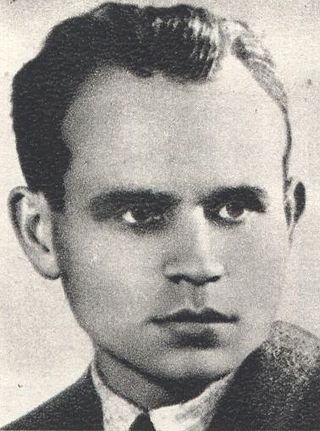
Antoni Kocjan was a renowned Polish glider constructor and a contributor to the intelligence services of the Polish Home Army during World War II.

The Polish resistance movement in World War II, with the Polish Home Army at its forefront covered both German and Soviet zones of occupation. The Polish resistance is notable among others for disrupting German supply lines to the Eastern Front, and providing intelligence reports to the British intelligence agencies. It was a part of the Polish Underground State.

The 111th Fighter Escadrille of the Polish Air Force was one of the fighter units of the Polish Army. Created in 1921, immediately after the end of the Polish-Soviet War, the unit inherited the traditions of the famous war-time Polish 7th Air Escadrille, in which both Polish and American volunteers served.
The Lithuanian Territorial Defense Force or LTDF was a short-lived, Lithuanian, volunteer armed force created and disbanded in 1944 during the German occupation of Lithuania. LTDF was subordinate to the authorities of Nazi Germany. Its goal was to fight the approaching Red Army, provide security and conduct Nazi security warfare within the territory, claimed by Lithuanians. LTDF had some autonomy and was staffed by Lithuanian officers, their most notable commander being Lithuanian General Povilas Plechavičius. LTDF quickly reached the size of about 10,000 men. After brief engagements against the Soviet and Polish partisans, the force self-disbanded, its leaders were arrested and sent to concentration camps, and numerous of its members were executed by the Nazis. Many others were either drafted into other Nazi auxiliary services or started forming an armed anti-Soviet resistance, also known as Forest Brothers. The Union of Soldiers of the Lithuanian Territorial Defense Force, a veterans organization, was founded in 1997.
The District of Warsaw (of Armia Krajowa) (Polish: Okręg Warszawa) - one of territorial organisational units of Polish Home Army, which covered the territory of Warsaw and its close neighbourhood i.e. the Powiat of Warsaw. Military units belonging to that district took part in the Warsaw Uprising of 1944.
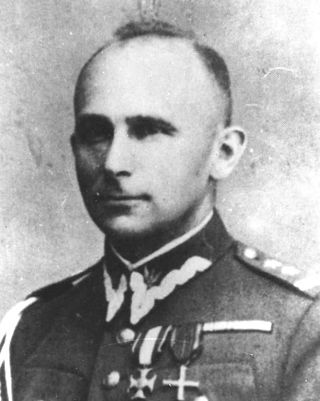
The Bureau of Information and Propaganda of the Headquarters of Związek Walki Zbrojnej, later of Armia Krajowa, a conspiracy department created in spring 1940 during the German occupation of Poland, inside the Związek Walki Zbrojnej, then of the Supreme Command of Armia Krajowa.
"Big Ben" was the World War II code name for the British project to reconstruct and evaluate captured German missiles such as the V-2 rocket. On 31 July 1944, after the UK agreed to exchange Supermarine Spitfires for the wreckage of a V-2 in Sweden during World War II, experts at Farnborough began an attempt to reconstruct the missile.
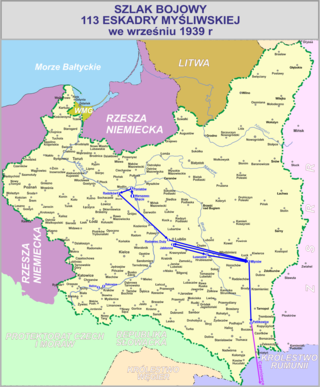
The 113th Fighter Escadrille of the Polish Air Force was one of the fighter units of the Polish Army at the beginning of World War II.
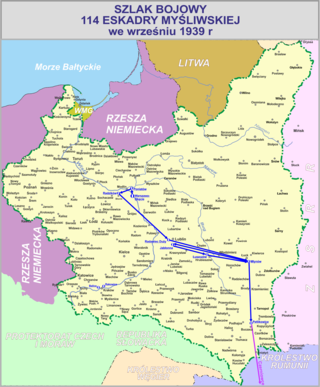
The 114th Fighter Escadrille of the Polish Air Force was one of the fighter units of the Polish Army at the beginning of the WW2.

The 121st Fighter Escadrille of the Polish Air Force was one of the fighter units of the Polish Army in 1939.

161. Fighter Escadrille was a unit of the Polish Air Force at the start of the Second World War. The unit was attached to the Łódź Army.

Military intelligence on the V-1 and V-2 weapons developed by the Germans for attacks on the United Kingdom during the Second World War was important to countering them. Intelligence came from a number of sources and the Anglo-American intelligence agencies used it to assess the threat of the German V-weapons.
The Polish Fighter Squadron, also known by its designation GC I/145, was the largest fighter unit of the Polish Air Forces in France. Formed of Polish pilots who evaded capture by the Nazis and the Soviets in the aftermath of the Invasion of Poland of 1939, the unit was initially earmarked to be sent to Finland as part of the aborted plan of Allied intervention in the Winter War. Eventually it took part in the Battle of France defending the French skies along the allied armies.

The Blizna V-2 missile launch site was the site of a World War II German V-2 missile firing range. Today there is a small museum located in the Park Historyczny Blizna in Blizna, Poland. After the RAF strategic bombing of the V-2 rocket launch site in Peenemünde, Germany, in August 1943, some of the test and launch facilities were relocated to Blizna in November 1943. The first of 139 V-2 launches was carried out from the Blizna launch site on 5 November 1943.
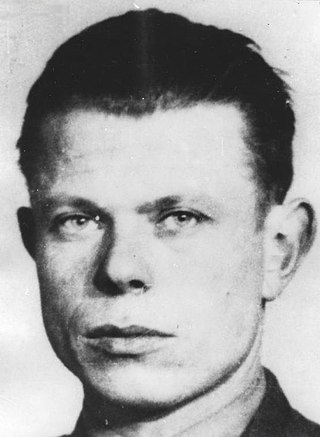
Stanisław Jerzy Sędziak, noms de guerre "Warta", "Wola", "Oset", "Wojna", "S-2", "T", "Stanisław Sędziszewski", "Zaremba", "Kulesza", "Czesław Noakowski" – a certified lieutenant colonel of the Polish Army, participant in the defensive war of Poland in 1939, cichociemny; 1942–1944 chief of staff of the Home Army Nowogródek District, in 1944 acting commander of the district, deputy and then chief of staff of the Białystok Citizens' Home Army District, Delegate of the Armed Forces for the Białystok District, in the years 1945–1947 deputy president of the WiN Central Area Management.


















